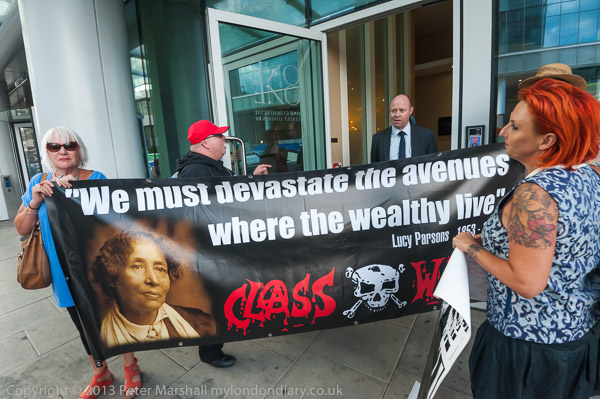Although I’d had a strong interest in photography since my early years, probably first inspired by magazines such as Picture Post in my childhood, followed by the gift from a middle-class relative of a large stack of pre-war National Geographic magazines. In my early teens I saved for well over a year from my minimal pocket money and Christmas and birthday gifts to buy a Halina 35mm camera – and then spent more years becoming familiar with it before I could afford to buy a film and pay for it to be processed; it was only a dozen or so years later that I had both cash and the opportunity to seriously take up photography.
That was around 1970, and it was at an interesting period in the history of photography in the UK. One of the key things for me at the time was coming across a magazine on the top shelf at a newsagents called ‘Creative Camera‘ which changed my ideas about our medium.
I can’t now remember which was the first issue I bought, and though I’ve kept my copies from back then I also in the following years bought some of the earlier issues to add to my collection, along with some early issues of another and far more short-lived publication, Album. This lasted only for a dozen monthly issues, and I think I came across it at its end and was one of those who responded to a plea to subscribe at the time of what turned out to be its final issue. This was a great disappointment, and it didn’t help not to get my money back despite the promises. You can now read all 12 issues online.
Much later I heard stories from some of the many photographers who had sent in portfolios to Album and had not had them returned (I never heard anyone tell me their work was returned) about their photographs having been sold without their knowledge or consent. At the time I didn’t myself have any work worth sending.
I didn’t at the time know personally any of the people who were behind these two publications and I’ve found it interesting to watch recently the film ‘Do Not Bend‘ about Bill Jay and more recently to listen to the series of podcasts by Grant Scott ‘In Search of Bill Jay‘, still being added to.
During the years concerned I lived in Manchester, Leicester and Bracknell, all well away from where things were happening in London, though I did briefly become a member and go to some photographic events at the ICA, possibly still when Jay was around. But I never go to know any of the small clique at the centre of things then, though I came across some of them later through Creative Camera, the Photographers Gallery, which I belonged to for well over 30 years before giving up my membership in disgust, and elsewhere.
Grant Scott has certainly been thorough with his research and has pointed out in the podcasts a number of errors particularly in the accounts of the early years of both magazines by Gerry Badger. But there is a problem common to all such research in that it largely relies on recordings and publications along with some very fallible memories of those key players still living. There is a very large body of writing and recording of Bill Jay himself, and though Scott has already pointed out some of its inconsistencies, I think he has perhaps not taken full account of a deal of self-aggrandisement within Jay’s talks and writing.
And although London with Album and Creative Camera was certainly the epi-centre of a new life for photography in the UK, things were happening around the country in many ways in the 1970s and though Jay certainly was at its centre at the start he left the country having helped light the fuse.
I came to spend quite a lot of time (and money) at the Creative Camera bookroom in London and did later send my work to that magazine, with several rejections before a small group of pictures appeared in the last of their albums.
Jim Hughes wrote about Bill Jay in a post on ‘The Online Photographer’, Bill Jay’s Vision, in 2012, and he quotes from two speeches by Jay that make interesting reading. I’ll end with two short excerpts from these quotes – but do click and read the rest, including Hughes own comments and those by others at the end of the article:
“I have no desire to be considered a photographer. I got into photography because I loved the medium and I admired the people who became photographers.”
“And my big fear is that the histories of photography in the future will be based on the photographers who were saleable through galleries, not through the best photographers in the medium.
“We need people who understand the history of the medium and have standards, who are saying ‘photography has something extraordinarily important to say about our culture, our society, our political system’—these are the things we should be looking at and caring about.”
Bill Jay – ICP Infinity Award acceptance speech, 2008
